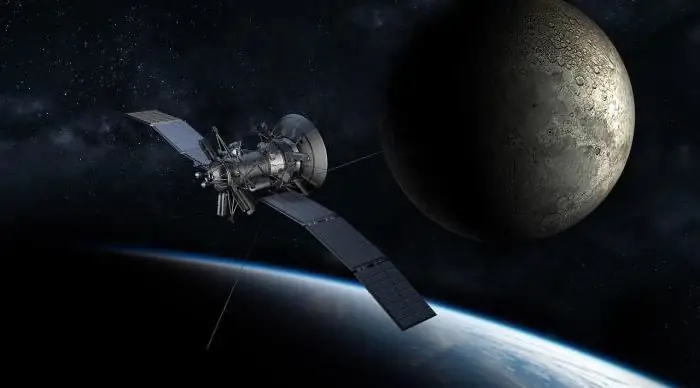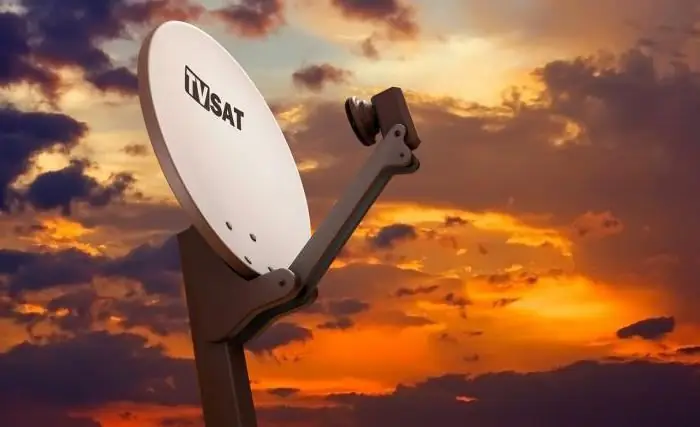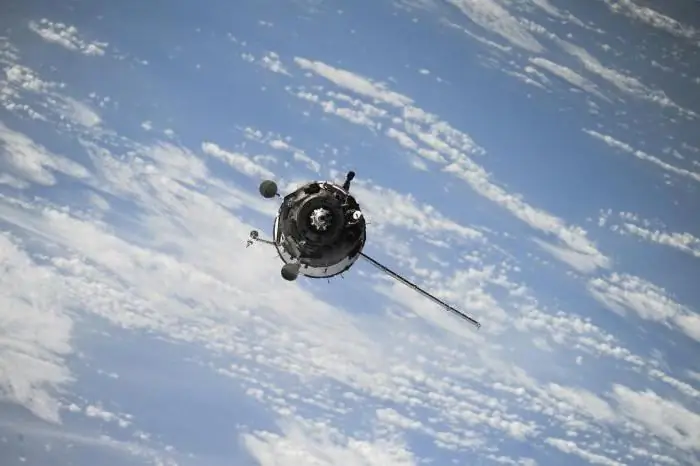Connection to free satellite TV has become possible due to the availability of open channels. But in order to connect to them, you need not only to purchase special equipment, but also to be able to install and configure it. How much more profitable is the installation of a satellite system than a simple antenna for receiving an analog signal?
Selection of equipment
In order to connect to open channels on satellites, you must first purchase equipment and install it. The kit includes: dish, receiver head (converter), cable, receiver. The advantage of connecting open channels is that you do not need to purchase equipment from one particular supplier.
For example, to receive Tricolor TV channels, even free ones, you need to buy a set of equipment from one company. At the same time, it costs much more, and the number of channels is much less.

When choosing, you should pay attention to the availability of the guarantee, the serviceability of the equipment, its power and size, as well as compatibility with the TV installed in the house. You also need to find out which cables are suitable for connecting to it.
ForFor stable reception, a dish with a diameter of 0.8-0.9 m or more is suitable. The larger the dish, the larger the signal receiving area, and hence the power of the received signal. To increase the number of received open channels, you can install two dishes by connecting them to one receiver using a tee.
Setting the plate
Installation of the plate is one of the most important stages of work. How correctly the dish is installed depends on which open channels the receiver will receive, the strength and purity of the signal. Incorrect setting will result in no reception.

The plate must be installed in an open space. It is best to put it on the roof. In the absence of such an opportunity, it is placed on the most open side of the house. Neither trees nor buildings should be closer than 3-4 meters from it. How to attach the device to the wall of the house using a special bracket? The plate is attached to it at a special angle, both vertically and horizontally.
The angle depends on which satellite signals will be received from. And the ability to connect to it depends, in turn, on the location of the building and the presence or absence of sources of interference near it. Usually, when the plate is placed vertically, the angle is from 18 to 27 degrees. When horizontal - the angle of rotation depends on which side the antenna is installed: east, west, south or north, and the position of the satellite.
Installing the receiver head
Head receiver - converter, also mounted onbracket. It is installed in front of the plate towards it. When installing the converter, it is important to observe the polarity, that is, the angle of rotation of the head. For reception from satellites of paid providers, such as Tricolor TV or NTV +, this parameter does not matter. However, for signals from a satellite that provides access to open channels, polarity is very important.
Select receiver
To receive open channels from a satellite, any, even the cheapest receiver, is suitable. The main thing is that it supports the format of the transferred video - at least MPEG-2 or MPEG-4. It is undesirable to take "nameless" models from China, since they do not always have support for Russian satellites and menus in Russian. Setting the parameters is quite complicated, especially if you connect two antennas to the device at once for different satellites. You will have to adjust a lot of values before the list of open channels can be configured.

How to choose a satellite?
First of all, you need to choose a suitable satellite. You can do this on the site mapsat.ru. This resource has a drop-down list with the names of the satellites. Not all of the presented options may be suitable, since some of the signal source is at an inaccessible transmission angle.
If the satellite is not suitable for the selected area, the application built into the site automatically displays a message about this. It is better to rewrite the names of the satellites separately in the list in order to be able to choose the most suitable one when setting up the receiver.

When choosing, you should take into account that foreign TV broadcasters each broadcast in their own language. Therefore, in order not to speak an incomprehensible dialect on TV, it is necessary to choose Russian satellite models.
Setting up the satellite on the receiver
One of the hardest steps is setting up the receiver. Each receiver has its own characteristics, but the configurable parameters on almost all models look something like this:
- First you need to go to the settings menu and specify from which satellite the signal will be received. The list of supported devices is already registered on the device in the software. It remains only to choose the most suitable one.
- After the satellite is selected, it is necessary to set the coordinates, degree of longitude (see mapsat.ru website) and hemisphere (east), KU range.
- Set the signal reception frequency. The frequency depends on the satellite model. For example, for the Ku_ABC2 satellite, the reception frequency is 11559, the polarity is vertical. There can be several reception frequencies, but you need to select only one.
After entering the above parameters, the receiver should show information that the satellite has been found. For more information on which menu items to carry out this or that setting, see the instructions that came with it. The menus in different models of the receiver differ from each other, but the parameters for setting are almost the same in all. You will have to adjust the satellite, coordinates, polarity and frequencies of open channels.

Channel search settings
Aftersatellite reception settings, you need to download the list of open channels. Next, set up the search. To get started, specify the following parameters in the search settings:
- search mode - "Blind" or "Auto";
- connection type - "Free channels";
- service type - Central Television.
And click on the "Search" button. The receiver must scan all the frequencies of the TV channels transmitted from the satellite. The time it takes to search depends on the signal strength and the number of channels. The search lasts from a few seconds to five minutes. In overcast cloudy weather, the signal level drops, and the number of channels found may be less than it could be on a clear, fine day. When setting up, this factor must be taken into account.

How many channels are available?
Naturally, after connecting and setting up, the question arises of how many open channels are available? The number of available TV channels depends on the diameter of the dish and their number, as well as the selected satellite. Most often, these are 10-15 TV channels plus 5-6 radio stations, but sometimes more.
If we consider that not only all-Russian, but also regional TV channels broadcast from satellites. Also, during the search, duplicate TV channels may be downloaded, since the signal may be intended for residents from other regions located in adjacent time zones.
And then another question arises. If there are so few channels, why spend money on buying a receiver, a dish and a converter, albeit inexpensive ones, when it’s cheaper and easieruse an analog signal rather than a digital one? The digital signal, i.e. satellite, is much more stable and stronger. Image quality is higher. The plate is firmly attached to the bracket and is not afraid of wind or thunder.
And you can install it at any height, the main thing is that other objects do not cover it, creating interference. In addition, the number of received digital television channels is much larger and their number and variety can be expanded by connecting other satellites or installing a dish with a larger diameter.






